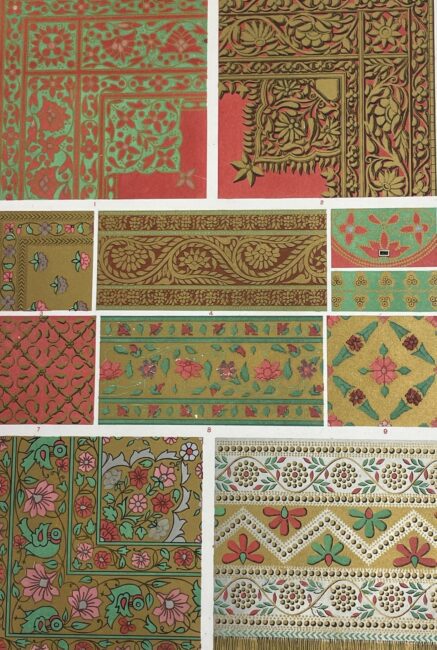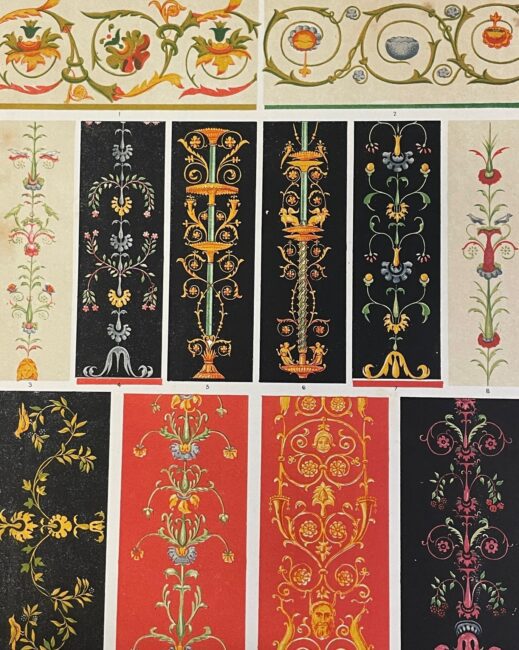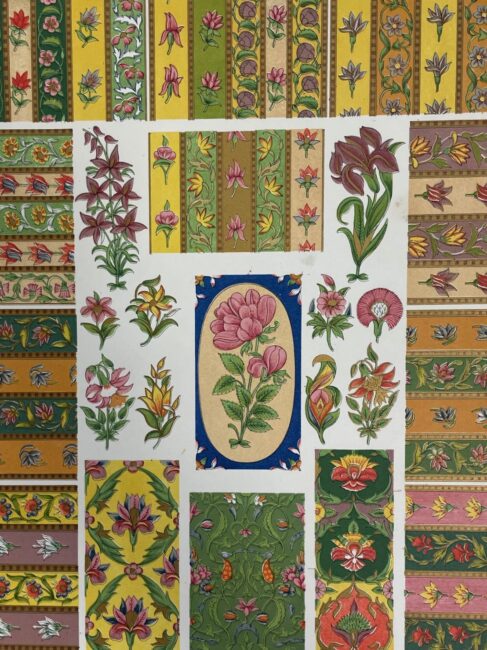
TMU Libraries’ Special Collections has recently acquired an 1865 German translation of Owen Jones’s Grammar of Ornament, printed by Day & Sons, the London-based publishers who printed the original 1856 English first edition. This newly acquired German edition was printed on the same, original plates as the English folio edition, but with translated text.
When the first English edition appeared, Jones’s Grammar became instantly influential not only because of its encyclopedic coverage, but also because of his development of colour printing technology. Jones’s work explored a vast array of cultural approaches to design, and his innovations in chromolithography enabled production, for the first time, of colour facsimiles in print.
His work also opened up a world of design to women–access which did not previously exist. “In an era when museums had gender and class restrictions on admission to their collections, this innovation enabled many readers, for the first time, to see works of art to which they did not have physical or geographical access,” says Special Collections Librarian, Holly Forsythe Paul.
Forsythe Paul also notes that “the Design Reform principles Jones painstakingly outlined in The Grammar were used to form the basis of a curriculum for women who trained at gendered art schools,” adding that “with the lessons based on Jones’s rules, women were trained for design industries, opening up employment in which they had previously been debarred.” These industries included: illustrative engraving, textiles, glassware, and ceramics. The book’s principles and designs allowed women to embark on new careers and become artists in their own right.

The Grammar of Ornament remains relevant as it represents a core work of the Anglo American tradition of graphic design, and offers a number of opportunities to research and examine history, design, culture, literature, image arts, and fashion.
For graphic art and design, Jones’s Grammar is a foundational book, particularly in the way it abstracts ornaments from their context, flattening them and presenting them in two dimensions as pure colour.

Study of the book however, goes beyond design. It offers a breadth of perspectives from which to research, such as women’s studies, history, book production, economics, and cultural studies. Jones’s Grammar is a rich resource for scholarly exploration.

TMU Libraries’ acquisition of this chromolithographic edition provides researchers with an authentic historical artifact that can be used in conjunction with common circulating print copies.
To learn more about the Grammar of Ornament and the scholarly opportunities it presents, contact TMU Libraries Special Collections
